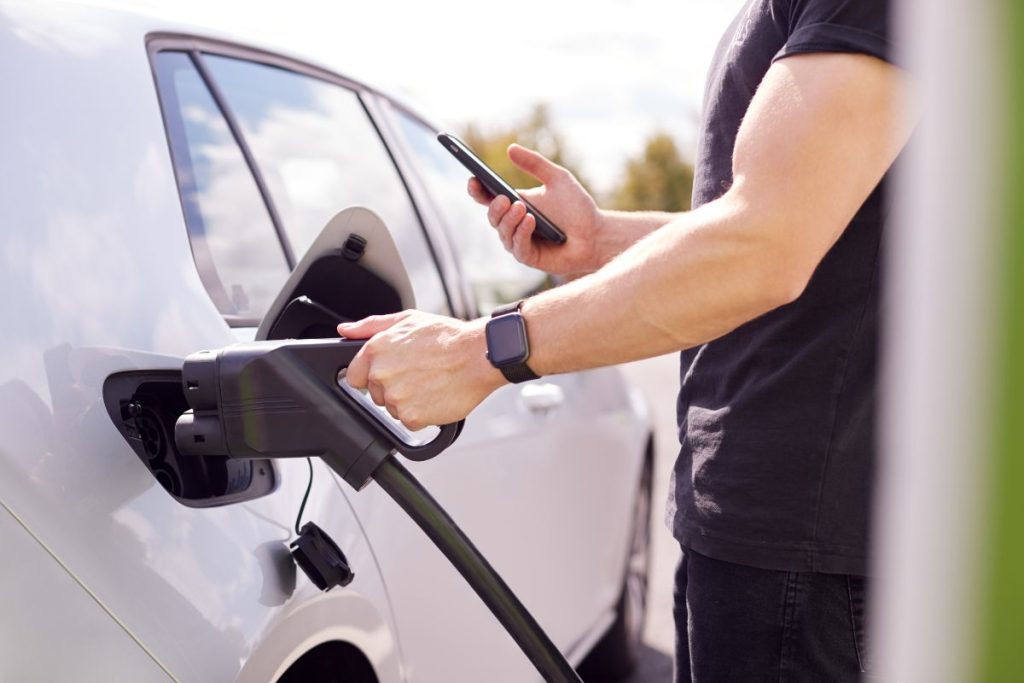Following the UK government’s announcement that the production and sale of new ICE vehicles will be banned by 2035, Centrica’s Hive found that 54% of drivers surveyed want to switch to EVs in the next five years. But many people still feel unsure about driving an electric car due to common misconceptions surrounding running costs and concerns about battery range.
If you’re a new EV driver, or you’re considering making the switch and want know more about how to drive an electric car, our guide is here to help! Covering everything from how to charge your EV, to maximising your range, so you can feel confident behind the wheel.

How to Drive an EV: Understanding your vehicle
Before you can drive an electric car, you need to understand how they work. EVs and traditional ICE vehicles are very different, not only do they work differently, but many people find the driving experience very different too.
In simple terms, EVs run using energy stored in a large lithium battery which is converted into power by an electric motor and is then used to drive the wheels. EVs generate more torque than ICE vehicles, meaning they are able to accelerate faster and more smoothly.
An ICE vehicle works by burning fuel in the engine, the explosions cause gases to expand and push against a piston, which moves up and down. Rods connected to the piston then convert that movement into the power which turns the wheels. The burning of fuel is what causes the tailpipe emissions from ICE vehicles, and as EVs do not use this method, they are much cleaner and emission-free.
TIP: When you first switch to driving an electric car, you may come across a lot of unfamiliar jargon, if you’re struggling to wrap your head around the lingo, check out our EV Jargon Buster!
As well as differences in the way EVs work, there are also physical differences in the build of an EV compared to an ICE vehicle. For example, EVs usually weigh around 30% more than their fuel equivalents due to the weight of the battery, meaning you may feel like you have more stability on the road when driving an electric car. Because of this added weight, EV wheels are larger and designed to be more robust. You may also find that you need to change your tyres more often (roughly every 20,000 to 30,000 miles).
You will also find that EVs require less maintenance than ICE cars, as they have fewer moving parts, meaning there is less potential for things to go wrong. According to Cap HPI, EVs cost around 23% less to service and maintain, saving drivers money on their maintenance costs.
THE DIFFERENCES WHEN DRIVING AN ELECTRIC CAR
When it comes to driving an electric car, there are several significant differences you will notice, particularly if you are used to driving a manual ICE car.
- EVs are automatic – Perhaps one of the most significant differences drivers notice when switching to electric is the lack of manual transmission. This allows you to seamlessly change speeds without having to use the clutch to change gears, which is especially useful when driving in stop-start traffic or around busy city centres.
- EVs accelerate faster – Their lack of gears also means that EVs are able to accelerate faster thanks to their instant torque. This is because the machinery involved in starting your car has less work to do than an ICE engine.
- EVs are quieter – The average EV travelling at low speeds will produce around 4-5 decibels less noise, compared to an ICE equivalent. As you speed up, it is likely that the only noise you will hear from your car is the rolling of your tyres over the road.

Looking After Your Battery Health When Driving an Electric Car
When you first start driving an electric car, you may be very aware of your battery percentage. Although EV batteries are built to take you from A to B on one charge for most day-to-day journeys, there are some techniques you can use to stretch your range a little bit further whilst also preserving the overall health of your battery.
- Avoid battery degradation – though it may seem counterproductive when trying to preserve your range, avoiding charging your EV to 100% can actually benefit your battery health over time. Instead, try to keep your battery between 80% and 20%. Some charging apps will allow you to set a charge limit when you plug in, so it will stop charging once you reach your target.
- Minimise your use of rapid and ultra-rapid charging – it can be tempting to use these chargers all the time as a way of topping battery up quickly, however, this can put strain on your battery so if it can be avoided, it’s best to use a 7kW-22kW fast charger instead.
- Reduce exposure to extreme temperatures – extreme temperatures, particularly cold temperatures, can have a negative effect on your battery, causing it to deplete more quickly than usual. If possible, the best place to store your EV is in a garage where it is protected from the elements, alternatively, you can use a tarp or covering instead.
- Drive with your battery in mind – unsurprisingly, the way you drive can affect your battery. When driving your electric car, if you accelerate hard and drive at high speeds, your battery will drop quicker than if you maintain steady speeds.
- Make use of regenerative braking – this works by recapturing energy that would otherwise have been lost as heat when you brake, and storing it in the battery, extending your range. To do this, you should drive smoothly and avoid sudden braking where possible.
Charging Your Electric Car
Electric car drivers have several options when it comes to charging their cars and there are two main types of chargers:
Tethered– come with a charging cable pre attached, these are popular options for home chargers.
Untethered– do not have a cable attached, so you will need to bring your own. This means that untethered chargers are usually universally compatible.
As well as different tethering options, EV chargers come in different speeds from slow (3Kw), fast (7kW-22kW), rapid (23kW-50kW) and ultra-rapid (100kW+).
Most home chargers are fast chargers, so users can plug their vehicles in overnight for a full charge, whereas public chargers often deliver faster charging speeds for convenient top ups on the go.
An important consideration when driving an electric car is where you are going to do the majority of your charging. A study by WhatCar found that 93.6% of EV drivers do most of their charging at home, as this is generally considered the cheapest and most convenient method of charging. Charging your car overnight on off-peak rates can help boost your savings even further.
If you decide to use public charge points, either for on-the-go charges or as your main source of charging, there are a few things you must consider. Firstly, you should download some EV charging apps such as ZapMap, that allow you to find public chargers along your route. This means you can plan your routes according to the charging opportunities available to you.
It is also a good idea to carry your own charging cable with you, just in case you find yourself having to use an untethered public charger.

Conclusion
If you’re ready to begin your EV journey and drive an electric car for the first time, be sure to check out our other handy blogs and guides or get your free EV charger installation quote with Yü Charge.